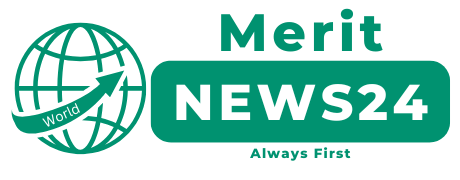MERIT NEWS24 TOP STORIES
Trending Posts
Latest Stories
US-EU Trade Deal Unlocks $600 Billion European Investment, Slashes Tariffs to 15%
Trump’s Scotland trip concludes with a landmark US-EU trade deal averting tariffs, urgent Gaza aid…
Thailand-Cambodia Border Conflict Ends in Ceasefire – But Will It Last?
Thailand-Cambodia border conflict reach a fragile ceasefire after deadly border clashes. Learn how US and…
From Trending to Truth: Everything You Need to Know About “Operation Sindoor” The India’s Biggest Action Against Terrorism
Get the full story on Operation Sindoor and Mahadev: From intense parliamentary debates on India’s…
India vs England 4th Test: A Manchester Masterpiece! How Gill, Jadeja, and Sundar Scripted an Unforgettable Draw
Relive the thrilling India vs England 4th Test 2025 at Old Trafford! Discover how Gill,…
Dr. APJ Abdul Kalam: Remembering India’s ‘People’s President’ and Enduring Visionary
Explore the inspiring legacy of Dr. APJ Abdul Kalam, India’s People’s President & Missile Man.…
Kargil Vijay Diwas 2025: Honoring the Unyielding Spirit of India’s Bravehearts
Kargil Vijay Diwas 2025. Learn about India’s victory, the brave soldiers’ sacrifices, and the importance…
India-UK FTA Explained: What It Means for Trade, Industries & You | Full Analysis
What does the India-UK FTA mean for you? Dive into our complete guide to understand…
Thailand Deploys F-16s as Border War with Cambodia Claims Lives
Explore the escalating Thailand-Cambodia border conflict. Learn about F-16 airstrikes, civilian casualties, diplomatic fallout, and…
Hari Hara Veera Mallu Movie: An In-Depth Look at Pawan Kalyan’s Epic, Reviews, and Box Office Buzz
Hari Hara Veera Mallu (HHVM): Explore reviews, budget, and cast of Pawan Kalyan’s historical epic.…
$550 Billion & “Hundreds of Thousands of Jobs”: The US-Japan Deal That Has Everyone Talking
Discover the monumental US-Japan deal bringing a $550 billion investment and promising hundreds of thousands…
India Asks: Why Now?! Jagdeep Dhankhar’s Sudden Resignation Rocks the Nation! Is Health The Whole Story?!
India’s Vice President Jagdeep Dhankhar has resigned mid-term, citing health. But as political circles buzz…
Eternal Zomato Q1 FY26 Results: Revenue Soars 70%, Profit Dips 90% – Why Shares Are Still Gaining
Eternal Zomato Q1 FY26 results are out! Unpack the numbers, understand Blinkit’s pivotal role, and…
Anthem Biosciences Share Price: A Detailed Look at its Listing Day Performance
Explore Anthem Biosciences Share Price performance on its IPO listing day. Get insights into its…
IBPS Recruitment 2025: Apply for 6,000+ PO & SO Vacancies by Today, July 21st, 2025!
IBPS Recruitment 2025: Last day! Apply for 6,000+ IBPS PO & SO 2025 vacancies today,…
Trump Cements US Financial Dominance with Landmark “GENIUS Act” for Stablecoin Regulation
Trump signs the GENIUS Act, landmark legislation regulating stablecoins to solidify US dominance in global…
Barack Obama Back in Headlines: What’s Driving the ‘Will Obama’ Trend?”
Discover why “Will Obama” remains a pivotal figure. Explore the surprising personal revelations, critical political…
From Epstein Files to Crypto Wars: Inside the House GOP’s Game-Changing July Agenda You Should Know
Explore the House GOP’s pivotal July 2025 agenda, from the push for Epstein files transparency…
PM Kisan Samman Nidhi Yojana: Latest Update on 20th Installment! How to get ₹6000 in account, check status and correct mistakes
PM Kisan Samman Nidhi Yojana: Latest on 20th Installment! Get ₹6000 in your account, check…
Gaza Catholic Church Attack: Trump Calls Netanyahu After Deadly Israeli Strike
The Gaza Catholic Church attack: Get details on the deadly Israeli strike, Trump’s call to…
Perplexity Pro for FREE? Airtel Users, Here’s How to Get Your Year of AI Superpowers (worth ₹17,000!)
Unlock a year of FREE Perplexity Pro (worth ₹17,000!) with Airtel! Discover how India’s top…
Mahedi Hasan’s Masterclass: How Bangladesh Clinched Historic T20I Series Win Against Sri Lanka!
Discover how Mahedi Hasan’s sensational 4-wicket haul powered Bangladesh to a historic T20I series victory…
























